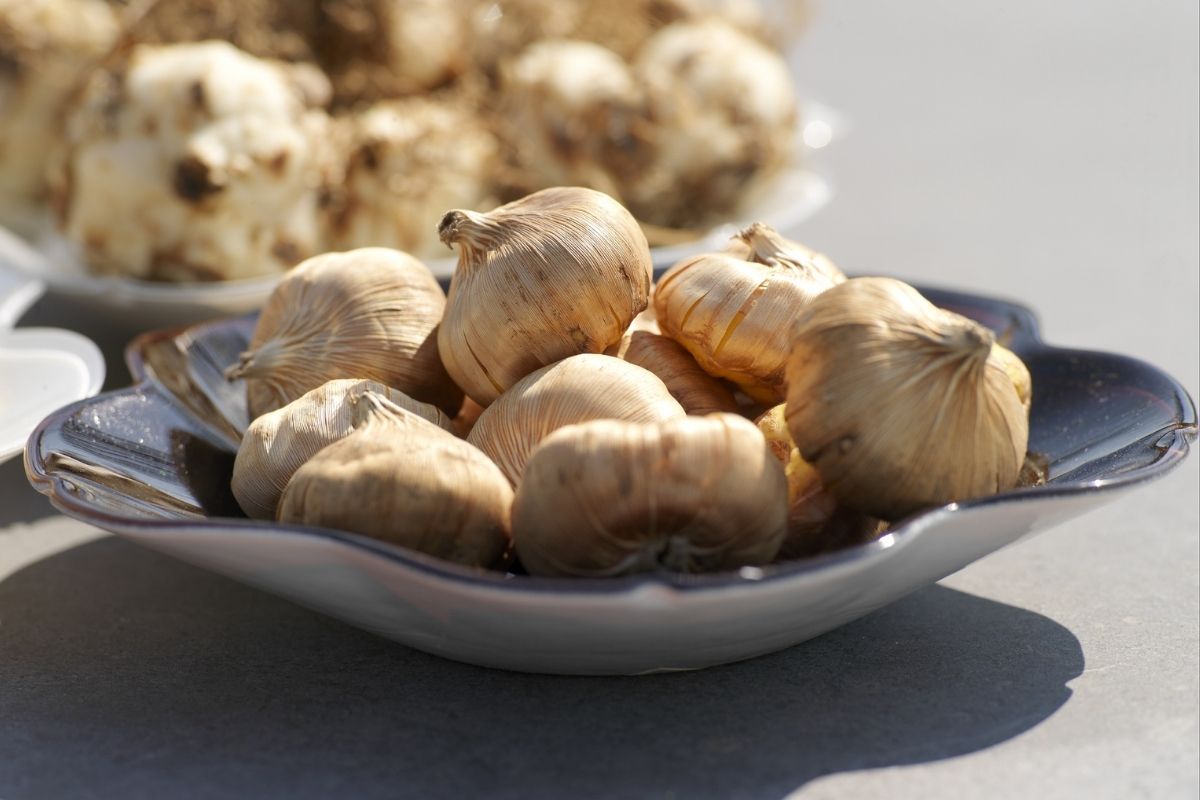
Time to Dig & Store
That first frost always sneaks up on me, I’m never ready for it, but it’s the signal that it’s time to make plans for those tender summer bulbs. Begonias, Callas, Cannas, Dahlias and Gladiolus, to name a few. I always have garden beauties that I want to save and they’re worth the investment of a little extra effort come next spring.
Here are basic steps to follow when overwintering tender summer bulbs:
Wait for the first frost that causes foliage to yellow or wither. A light frost will not damage tender bulbs, but a hard frost that freezes the soil can be devastating.
Cut withered foliage back to 3-6” inches above the ground level. At this point, dahlia growers will want to wait two weeks to allow new growth ‘eyes’ to form before digging up tubers.
Carefully dig the bulbs. Plan to dig a much wider and deeper hole underneath and around the bulb, several inches away from the main stem, to avoid any damage underground.
Once dug and lifted, gently free the bulb of excess soil without damaging the roots. Do this over a wheelbarrow or bucket to conserve your soil and return it to the garden.
Rinse bulbs under cool running water from a garden hose to remove the rest of the soil.
Now is a good time to label your tender bulbs. It’s so hard to tell which one is which come next spring. Tie on a label tag with variety name and color, or write directly on the larger bulbs with a permanent marker. To contain smaller bulbs, use paper lunch size bags with holes for ventilation.
Space the bulbs out on a tray or screen that allows good air circulation. Let the bulbs dry out completely for a few days in a cool (but not freezing), dark, and dry shed or garage, avoiding exposure to sunlight. Ideally, temperatures should be 16-20°C (60-70°F).
Rinse bulbs under cool running water from a garden hose to remove the rest of the soil.
Now is a good time to label your tender bulbs. It’s so hard to tell which one is which come next spring. Tie on a label tag with variety name and color, or write directly on the larger bulbs with a permanent marker. To contain smaller bulbs, use paper lunch size bags with holes for ventilation.
Space the bulbs out on a tray or screen that allows good air circulation. Let the bulbs dry out completely for a few days in a cool (but not freezing), dark, and dry shed or garage, avoiding exposure to sunlight. Ideally, temperatures should be 16-20°C (60-70°F).
When the bulbs are completely dry, remove any remaining stems and foliage. Discard any bulbs that show signs of severe damage or disease.
The bulbs are ready for storage. Select a place that is dry, dark and cool – but not freezing – through the winter. A dry shed, garage, or basement is suitable. Ideally, storage temperatures should be 7-12°C (45-55°F).
Begonias, Callas and Cannas: Place each bulb into an individual paper bag with a handful of dry peat moss or vermiculite. Individual bags prevent the spread of pests or disease, and they allow air circulation. Place open bags in a cardboard box for storage.
Dahlias: Large clumps may be difficult to store. You can divide clumps before storage, or at least cut them in half, allowing extra drying time for cuts to heal before stowing them away. After tubers are completely dry, store them layered in dry peat or vermiculite using ventilated cardboard boxes or crates.
Gladiolus: Store dry bulbs in mesh bags with good air circulation, such as hanging in a storage shed, garage, or basement.
Check on bulbs periodically over the winter and discard those showing signs of decay or mold. If bulbs appear shrunken, a light misting of water with a spray bottle will add enough moisture to keep them from drying out too much. Remember tender bulbs are dormant, living plants and may need attention through the winter.


